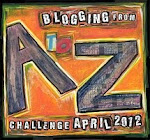In publishing, “Royalties” is the term for the author’s share of sales (or profits on sales) of the author’s work.
The percentage the author receives is called the royalty rate or royalty percentage.
Royalty terms vary widely, but here are a few useful guidelines to keep in mind:
1. Authors often receive higher royalties on e-books and hardback printings than other formats. The royalty rate on e-books is typically highest, with hardback, trade paperback and mass-market paperback each returning a lower royalty rate.
2. Some contracts feature escalating royalties based on sales figures. This means the author will receive one royalty rate for sales up to a certain number, and a higher royalty rate once sales exceed a specified amount. Escalating royalty clauses may contain 3 or more such benchmarks.
3. Royalty rates on international sales will often differ from those on domestic sales.
4. If the author grants the publisher film, television, gaming, graphic novel, and/or audiobook rights, each of these will bear royalties, often at different rates. Read contracts carefully to ensure that everything is spelled out clearly and fairly.
5. Where the author receives an advance, the publisher generally has no obligation to pay the author anything more until the author’s royalties exceed the amount of the advance. Once the book “earns out,” the author receives royalties on a regular schedule (as stated in the contract).
Have questions about royalties? Hop into the comments and let me know!


thanks for that explanation!
hope i get to use it someday…when i get published =)
Thanks for stopping by – I hope this proves useful!
I love these legalese posts. For those of us who don’t think along these lines, your explanations really help. 🙂